The new year begins with a new comet that may even be visible to the naked eye
Comet C/2022 E3 ZTF is coming close to the Sun for the first time in certainly 50,000 years, and on Thursday, January 12, it will come about as close to our central star as the Earth. It has been tracked by amateur and professional astronomers for several months now. It has now about 7th magnitude, so it is observable with common binoculars and even smaller telescopes. However, the currently three-degree-long plasma tail and a short dust tail fan shown in recent photos will not yet be seen visually with small optics. But that will change soon. The well-known comet photographer Michael Jäger sent us an impressive animation and a beautiful color image of the comet on Jan. 4 and writes about it:
We now have maximum activity at the ion tail. It does not come closer to the sun. But it has been shown that on some days the ion tail activity is increased. Whether this is a consequence of the solar wind only, we do not know yet. I could already document a rotation of the tail (attachment GIF from 2.1. with 11" RASA and QHY600, duration 2 hours), the (color) image is from 4.1. 5.00 UT LRGB 40 min (RASA and QHY 600)
After the comet gets a nice bit closer to Earth, it should not only become faintly clear. Also I expect a further increase of the tail brightness with lengths around 10 degrees (if the activity does not decrease). After Jan. 15, when the moonlight is no longer so distracting, we'll know more about what to expect at the end of the month.
Background: When ZTF comes close to Earth at the end of January to about 0.28 AU (i.e. only about 1/3 of the distance Earth/Sun), it is freshly warmed up from the solar passage two weeks before. Most comets are most active just then. A lot of ice evaporates on the warmed surface and carries dust with it. The dust tail, which is more impressive to the naked eye than the blue plasma tail, will grow. Also, the viewing geometry will improve somewhat.

Comet Map January-March 2023
Download as PDF
The new visitor from the outer reaches of the solar system will certainly not be as impressive as the last beautiful visible comet, C/2020 F3 NEOWISE in July 2020. But ZTF has the advantage that it is very high and optimally easy to find in the northern sky. It wanders between Big and Little Dipper, and this in the new moon time, when the sky is very dark. These lucky circumstances will surely help many beginners among amateur astronomers to their first comet observation - if the weather plays along. Try your luck, the best viewing conditions are during the nights at the end of January! The viewing map will help you.
Photographically, the comet is easy to capture with telephoto lenses, but tracking and about a minute of exposure time is definitely required to get an acceptable photo.
All celestial events 2023

A quick look at the year ahead in 2023: Solstices, Meteor, Moon, Sun, Planet, Eclipses
Observation tools
Since the comet is expected to be at the limit of visibility to the naked eye, you should seek out as dark a location as possible - ideally, the Milky Way or at least all seven stars of the Little Dipper constellation should be visible.
The free Celestron SkyPortal app will help you search with the naked eye. Via Search => Brightest Comets you can also find C/2022 E3 (ZTF) and display it on the map. When you hold your smartphone up to the sky, the map moves with it, so you can easily find its position.
Binoculars will help you find it. If you have a dark location, a 7x50 is ideal because it provides the brightest image and can still be used hands-free with seven times magnification. The Celestron 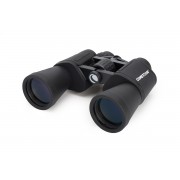 Cometron 7x50 FernglasCometron 7x50 Binoculars offer excellent value for money. Under somewhat brighter skies, it is better to reach for a model with slightly higher magnification or smaller aperture - this will darken the sky background somewhat. Inexpensive binoculars that are also well suited for nature observation are the UpClose G2 10x50 - Porro or the UpClose G2 7x35 - Porro. The SkyMaster 12x60 with twelvefold magnification and 60mm aperture is especially designed for twilight and astronomy, at this magnification a tripod like the TrailSeeker Tripod oder the larger
Cometron 7x50 FernglasCometron 7x50 Binoculars offer excellent value for money. Under somewhat brighter skies, it is better to reach for a model with slightly higher magnification or smaller aperture - this will darken the sky background somewhat. Inexpensive binoculars that are also well suited for nature observation are the UpClose G2 10x50 - Porro or the UpClose G2 7x35 - Porro. The SkyMaster 12x60 with twelvefold magnification and 60mm aperture is especially designed for twilight and astronomy, at this magnification a tripod like the TrailSeeker Tripod oder the larger
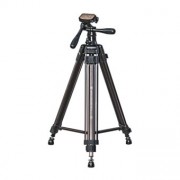 Astro & Nature Photo Tripod w. Fluid Head and quick mounting plate
Astro & Nature Photo Tripod w. Fluid Head and quick mounting plate (#2451020, € 235,-)
is worthwhile; you will also need the Baader Bino-Stronghold binocular mount, so that you can also look at the sky with the binoculars.
Astro & Nature Photo Tripod w. Fluid Head and quick mounting plate
Astro & Nature Photo Tripod w. Fluid Head and quick mounting plate (#2451020, € 235,-)
is worthwhile; you will also need the Baader Bino-Stronghold binocular mount, so that you can also look at the sky with the binoculars.
The above mentioned Porro binoculars have the wide body of classic binoculars and are therefore cheaper than the narrower roof edge binoculars - but the latter are the ideal companions if you often go hiking and space is also important. The 8x42 models (Outland X 8x42, Nature DX 8x42, Nature DX 8x42 ED, TrailSeeker 8x42 , TrailSeeker ED 8X42, Granite 8x42 and Regal ED 8X42) are good all-purpose binoculars and differ in optical and mechanical quality – there is a model for every requirement.
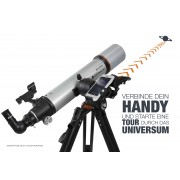 StarSense Explorer DX 102AZIn a telescope, bright comets regularly disappoint – they can become so large that they completely fill the field of view. Therefore, it depends on a large field of view and low magnification – your local dealer will be happy to advise you. If you have no experience with telescopes, the devices of the StarSense Explorer series are a good choice: Here, the cell phone helps you find the targets, and you don't have to get familiar with eienr computer controls or orientation in the sky.
StarSense Explorer DX 102AZIn a telescope, bright comets regularly disappoint – they can become so large that they completely fill the field of view. Therefore, it depends on a large field of view and low magnification – your local dealer will be happy to advise you. If you have no experience with telescopes, the devices of the StarSense Explorer series are a good choice: Here, the cell phone helps you find the targets, and you don't have to get familiar with eienr computer controls or orientation in the sky.
If you already have a telescope, go for the eyepieces that give you the largest field of view and the lowest magnification. On telescopes with a 2" mount like the Omni eyepiece 2" 56mm, 47° field of view or the Hyperion Aspheric series 2" eyepieces are recommended.
Filters for comet observing are not easy to find, also because not every comet behaves the same. You can find out more in this (german only) article: www.baader-planetarium.com/de/blog/kometen-filter
For imaging the same applies as for normal deep sky astrophotography, except that short exposure times are preferred. Optimal is of course a QHY color camera in combination with a fast astrograph like the 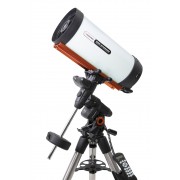 Advanced VX (AVX) 800 RASAAdvanced VX (AVX) 800 RASA – but also with a DSLR attached to the telescope or piggybacked with a fast lens you have good chances.
Advanced VX (AVX) 800 RASAAdvanced VX (AVX) 800 RASA – but also with a DSLR attached to the telescope or piggybacked with a fast lens you have good chances.
We wish good luck with the comet hunt at the beginning of the year! And who knows, maybe ZTF appeared 50,000 years ago at its last visit even closer and more spectacular at a much darker night sky. One can only try to guess, how a comet appearance must have affected our ancestors and the Neanderthals, which stayed together on earth at this time.
You can explore the position and movement of the comet in the solar system here in a 3D representation, below is an example screenshot of the position on January 16:
About the author: Michael Risch
Michael has been interested in astronomy and spaceflight, since he saw the last moon landing as a child. In 1981, he became a member of the Association of Amateur Astronomers in the Saarland and, as a member of the board, accompanied the establishment of the Peterberg Observatory. As co-founder and first webmaster of www.astronomie.de, he contributed numerous ideas and reports on astronomical and spaceflight topics to the first German astronomy portal. He has been practicing planetary, comets, solar, deep sky as well as TWAN style photography, and has been on many long distance trips, among others to 7 total solar eclipses. As a long-time science editor, he has led "Northern lights and stars" trips to the Arctic Circle. Michael has published many of his own photos and articles in professional journals and has written chapters for the books chapters for the books Fotoschule (Photo School) and Extremfotografie (Extreme Photography) with his colleague Martin Rietze for "Color Foto".
At Baader-Planetarium he is part of the observatory project team and is booked for lectures in Germany and abroad. Furthermore, he is an expert consultant for observatories, domes, high end mounts, telescopes and much more.


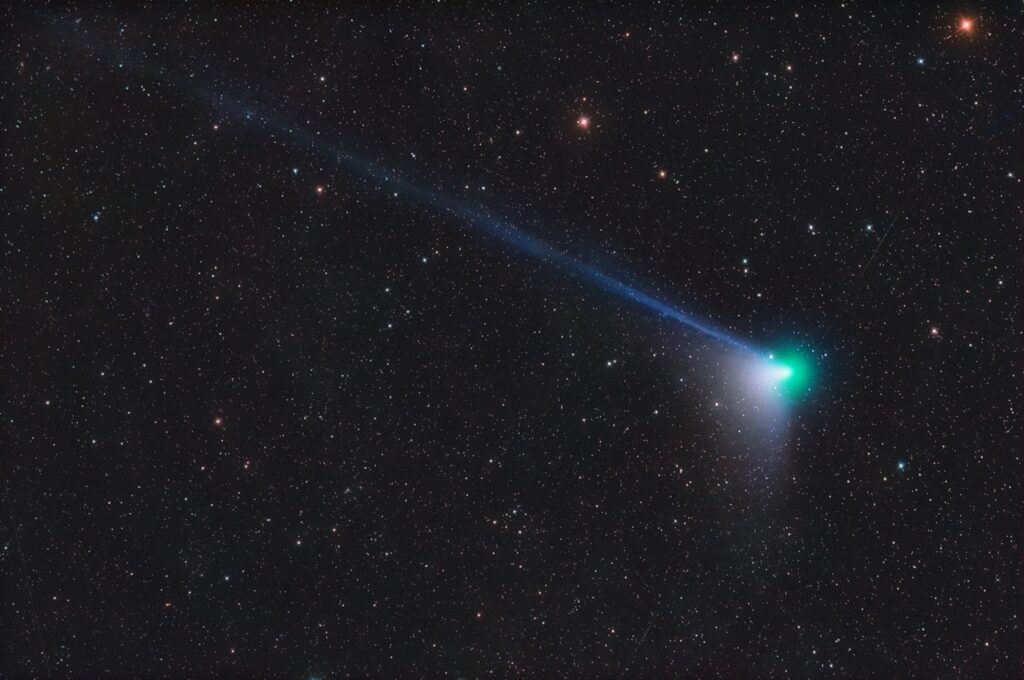






Very Informative